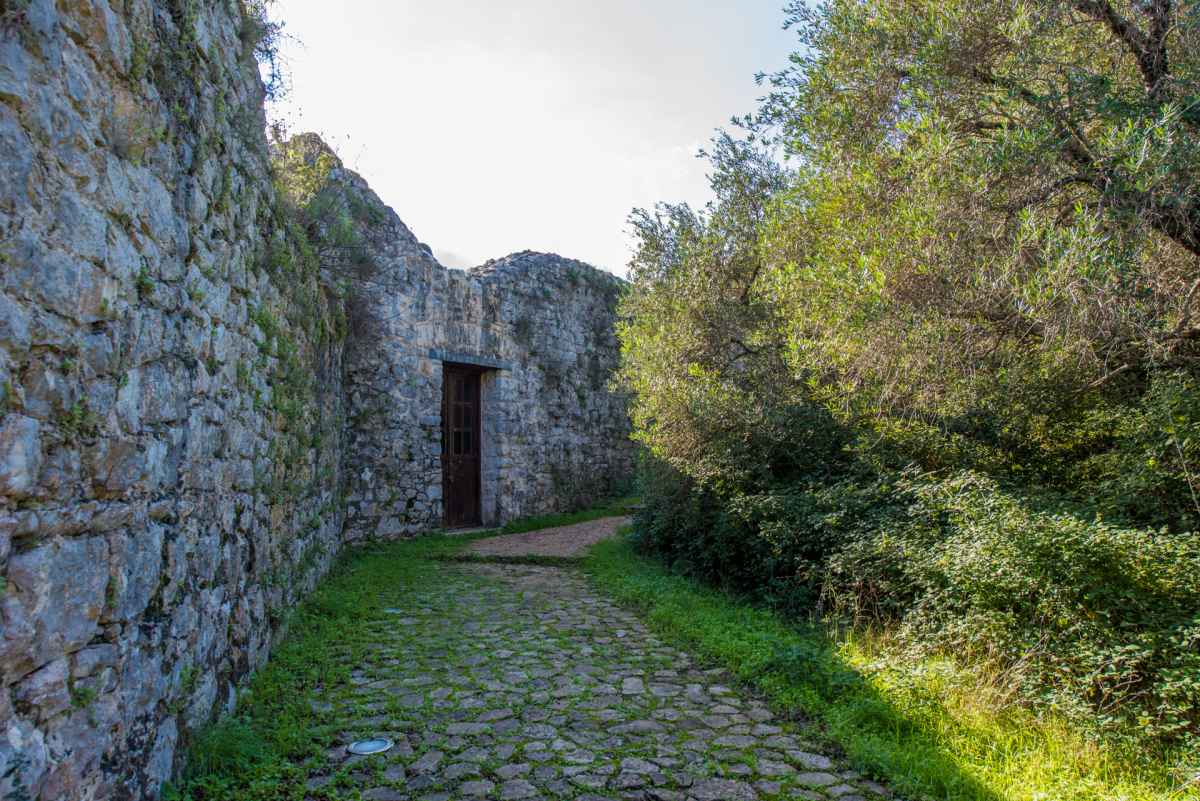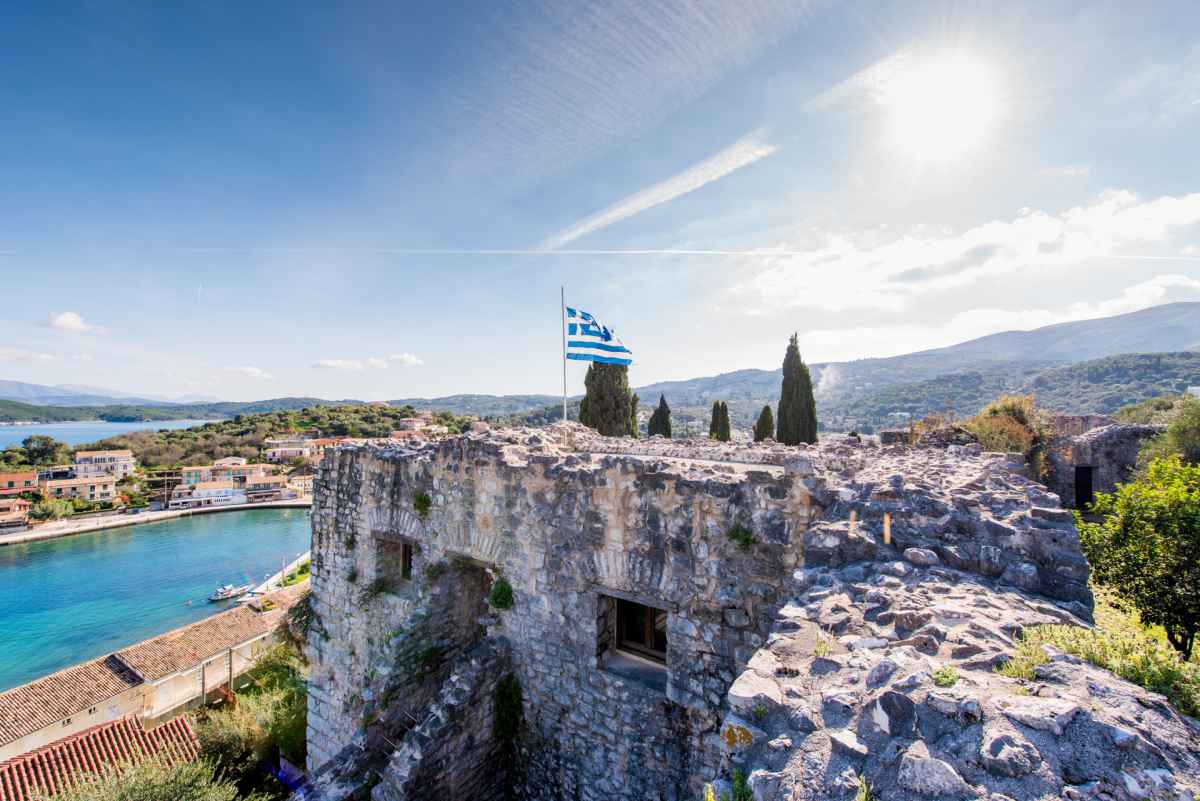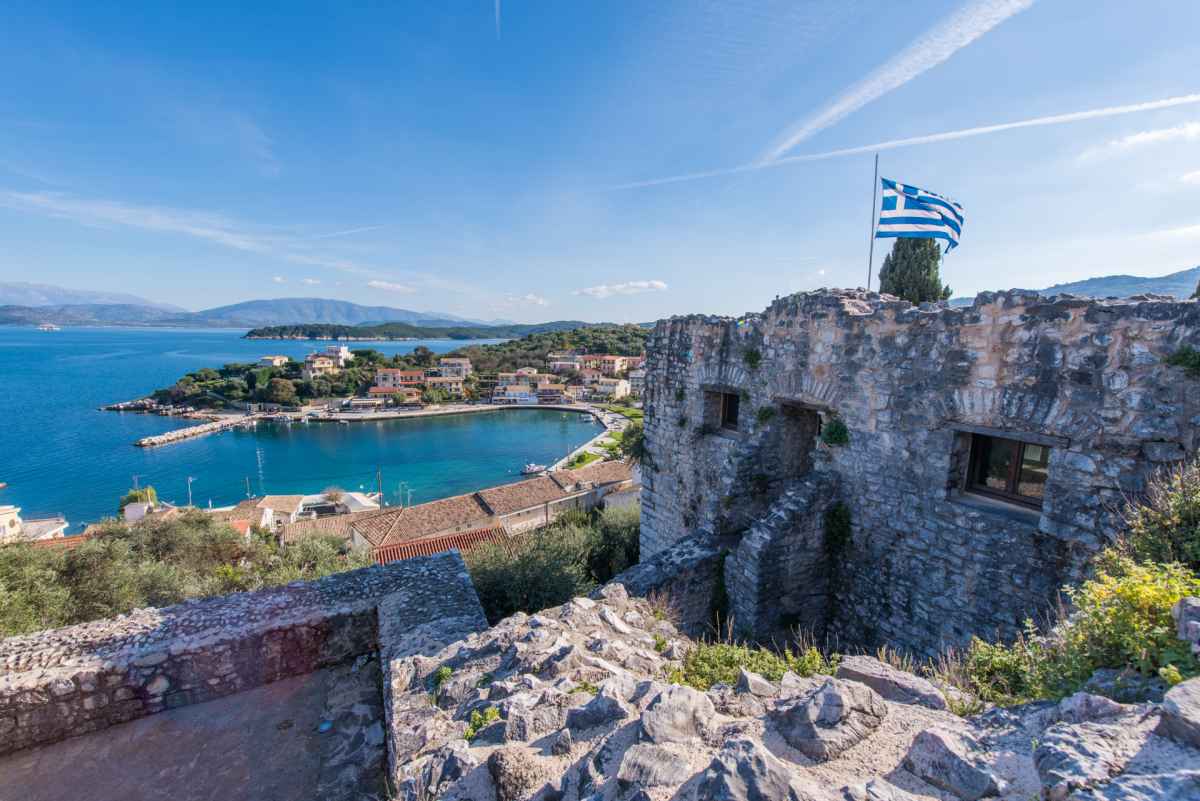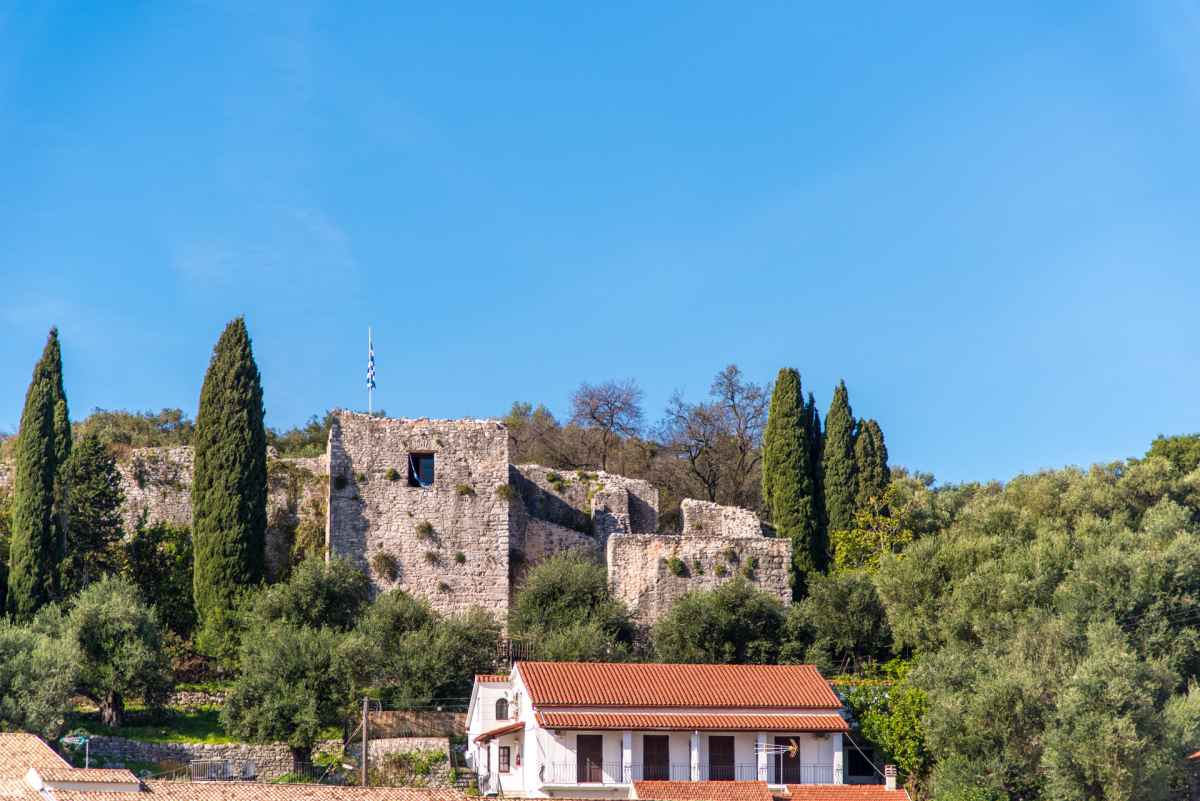The Byzantine castle of Kassiopi is built on a rocky hill on the fringes of the modern day city of the same name, is close to the sea and controlled the narrow passage between Corfu and the Albanian coast on the other side. The castle prospered until 1386 when it was destroyed by the Venetians after a long siege. It was depopulated after the Ottoman raids in the mid-16th century. At its four sides stand large towers. Along its four sides one can find in total seven rectangular and five semicircular towers alternating, which are currently in ruins. The main gate is at the eastern side of the fort.
Its establishment dates back to Byzantine times (12th -13th century). The castle prospered until 1386 when it was destroyed by the Venetians. It was occupied by the Genovese, who refused to surrender. After a long siege, the Venetians conquered the fortress and destroyed it fearing it might fall into enemy hands once more.
During Venetian rule, it seems not much attention was paid to the specific fortress, although the need of repairs in order to face the forthcoming threats from the east had been realised. Venetians chose to perform complementary works on fortifications that were in a better state. So the castle of Kassiopi was abandoned and deserted by the Ottoman raids of the 16th century.
17th century travellers describe an abandoned castle full of shrubs with only walls and some ruined towers still remaining. This is a reasonable description, should one consider that the damage the castle had gone through was exacerbated by the removal of building materials for the construction of the walls of the Old Fortress of Corfu in the years 1537-1558.
This Byzantine castle, although wounded by the course of history and ravages of time, managed to survive until today. In recent years, some of its parts underwent extensive restoration.
The castle’s most characteristic feature is its restored central gate that was framed by two two-storey towers. The main gate is at an alcove, according to the rules of early fortification. Along the castle’s four sides one can find rectangular and semicircular towers alternating, which are currently in ruins. Most peripheral towers are hollow on the inside, while there is evidence that they too were initially two-storey. The castle’s perimeter reaches almost 1,1km. On the inside of the castle there are no building facilities.
Video
Virtual Tour
3D Reconstruction














